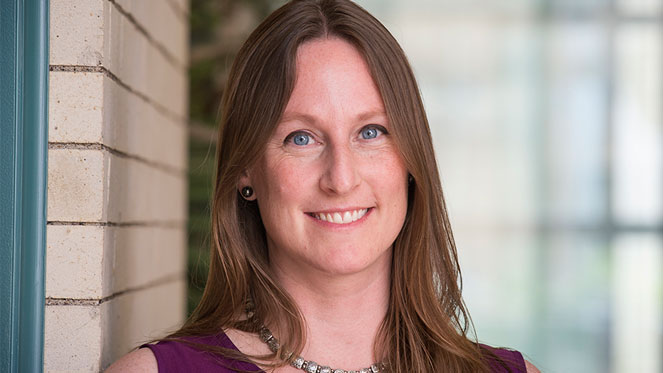An Anthropologist in the 21st Century Classroom

Educational tools can make all the difference to the learner, but despite the availability of excellent new options, many of the best technology enhanced learning (TEL) resources are being left on the shelf. Carnegie Mellon University researchers have been working to understand this quandary.
"We know more about teaching and learning than ever before, and yet, for the most part, the new tools and practices proven to be effective are not adopted. The overarching question that sparked the grants and related projects is, 'Why?'" said Lauren Herckis, a research scientist for the Simon Initiative.
Through a $1 million, two-year grant from Carnegie Corporation of New York in 2015, Herckis and her team members are working to better understand and develop strategies around the obstacles blocking the way to best-in-practice teaching techniques.
As an anthropologist with an archeological focus, Herckis applies a unique perspective to the project. She gains an understanding of culture and behavior through human interaction with the material world.
"Archeologists have developed a tremendous variety of methodological approaches for understanding the ways people engage with tools and materials over a long term. In this case, I am studying how faculty engage with technologies and technological change," Herckis said.
Herckis has been conducting analysis on various approaches to teaching and the use of TEL resources by faculty. She collected both quantitative and qualitative data and looks at the development and use of TEL in different contexts.
Through interviews, Herckis found past relationships with teachers and family members highly influential on how educators perceived best teaching practices.
Among other findings, the research suggests a need to better prepare educators to use TEL resources with good guidance and instruction. Herckis cites the medical community as a professional example that supplies personnel with "best practice" checklists for places like the exam room.
"Dr. Herckis's work is adding important information about the complexities of implementing innovations in higher education and suggests new ways in which faculty might be supported in their daily efforts to improve learning," said Joel Smith, Distinguished Career Teaching Professor of Philosophy.
Looking ahead, Herckis would like to study the best options for providing TEL guidance and interventions that successfully bridge that gap between research and practice.
The findings of Herckis and her colleagues may soon give schools a roadmap for using new teaching techniques and technologies that have been proven effective. The results could ultimately improve learning for students, increase the impact of instructors and redefine what it means to be a state-of-the-art classroom.
And, this work is at the center of the Simon Initiative, which is designed to set the university up as a learning research lab that supports data-driven, continuous educational improvement.
From an anthropologist's viewpoint, it may just take a close look at our past to propel classrooms into the future.
Herckis will discuss this work at the 2017 Global Learning Council Summit in Berlin, Germany. Her working group sessions is titled, "Walking the Talk – OvercomingBarriers to Implementation of Best Practices in TEL for Higher Education."
_____
By Ann Lyon Ritchie